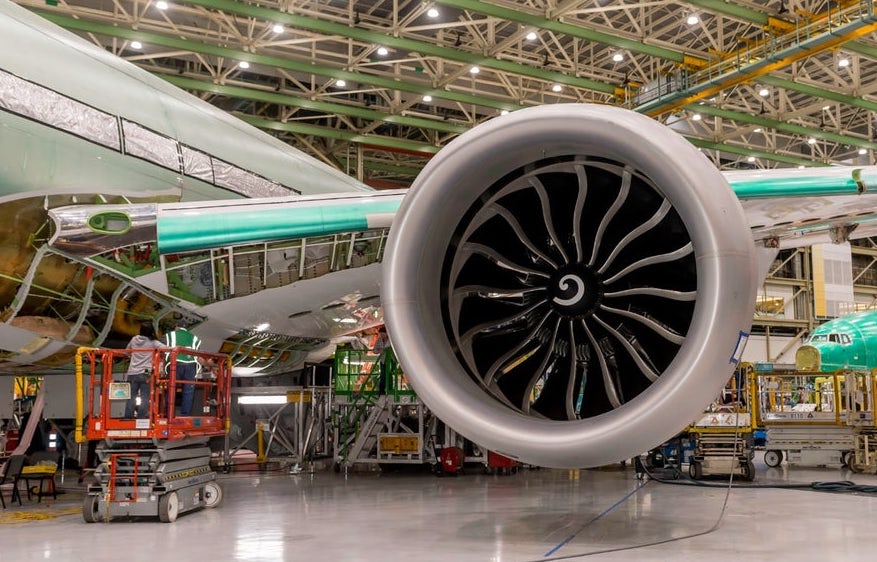Directed Energy Deposition (DED) and Aerosol Jet Printing (AJP) metal 3D printer developer, Optomec, has received a £1 million contract from the U.S. Air Force to deliver a high-volume machine for the refurbishment of turbine engine components, including titanium parts.
The New Mexico based company is tasked with producing the machine which will feature a range of state-of-the-art capabilities, including an automation system for batch processing, an oxygen-free controlled atmosphere, and an adaptive vision system. The machine will be installed at Tinker Air Force Base in Oklahoma City.
“Optomec is proud to be serving our military,” said Jamie Hanson, VP business development at Optomec. “We have been processing titanium for years, but not in high-volume, oxygen-free production cells, although Optomec has developed automated, high-volume production cells for other alloys.”

Optomec’s LENS technology
Optomec’s metal additive repair solution is based on its proprietary Laser Engineered Net Shaping (LENS) technology, first commercialized over two decades ago. LENS uses a DED process in which a highly concentrated stream of metal powder is jetted into a molten pool created by the focus laser beam. By controlling the melt pool and powder flow, a metal structure is built up either as a fully printed part or as a deposit onto an existing component to repair it.
Optomec has been continuously developing the capabilities of its LENS technology, and in May announced its LENS 3D printers can now be used to deposit any aluminum alloy. At the end of 2019, the firm also developed process parameters for the production of pure copper parts and released a new software tool, AutoCLAD, to accelerate the use of additive manufacturing for repair.
Most recently, Optomec launched a new Return On Investment (ROI) assessment tool to evaluate the profitability of automated laser cladding equipment for gas turbine Maintenance and Repair Operations (MRO).
The company has delivered more than 200 LENS/DED machines, with almost half of these being used in production to repair turbine blades in the commercial aviation and power generation markets.

Metal Additive Repair solutions for the U.S. Air Force
The automated additive repair system designed by Optomec will be able to process tens of thousands of repairs each year, initially focusing on tip refurbishment for the U.S. Air Force’s turbine blades. The company will also assist the Air Force in developing optimal process parameters for a range of target repairs.
The U.S. Air force spends billions of dollars per year on its MRO activity for its military aircraft engines. A lot of this expenditure is dedicated to the replacement of worn or damaged components with newly made parts.
Meanwhile, Optomec’s Metal Additive Repair solutions, which allow for the restoring of existing parts, have demonstrated cost savings of up to 70%. Not only do the solutions provide significant monetary savings, but the Air Force will also benefit from shortened and more predictable lead times, as well as reduced supply chain dependencies.
“The challenge given to us by the Air Force was to provide a system based on commercially proven capabilities that meet their production and technical requirements,” continued Hanson. “We will be providing a first of a kind machine with automation that enables virtually uninterrupted production in an oxygen-free environment. This capability will help enable the broader aerospace industry by meeting its cost-reduction goals going forward.”

Adoption of additive manufacturing for MRO in aviation
The U.S Air Force is optimistic about additive manufacturing’s potential in its aircraft sustainment, with engineers from the Oklahoma City Air Logistics Complex becoming the first to successfully test a 3D printed metal component inside a U.S. Air Force aircraft engine earlier this month.
In May, a collaborative metal additive manufacturing program between the U.S. Air Force, GE Additive, and GE Aviation, hit its first technology milestone with the 3D printing of a sump cover for the F110 jet engine, used on the Air Force’s F-15 and F-16 aircraft.
In the commercial sphere, GE Aviation, a multinational provider of jet engines, components, and integrated systems, invested in 27 Arcam electron beam melting (EBM) machines last year to produce titanium aluminide (TiAL) blades for Boeing’s GE9X Commercial Aircraft Engine. And in 2018, the firm celebrated its 30,000th 3D printed fuel nozzle tip, installed within GE’s LEAP jet engine, marking a significant milestone for production-scale additive manufacturing.
Nominations for the 2020 3D Printing Industry Awards are still open, let us know who is leading the industry now.
The fourth edition of the 3D Printing Industry Awards Trophy Design Competition is now underway. Enter your design for the chance to win a CraftBot Flow 3D printer.
To stay up to date with the latest 3D printing news, don’t forget to subscribe to the 3D Printing Industry newsletter or follow us on Twitter or liking our page on Facebook.
Are you looking for a job in the additive manufacturing industry? Visit 3D Printing Jobs for a selection of roles in the industry.
Featured image shows view inside an aviation hangar. Image via Optomec.



